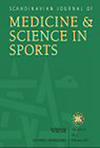人类骨骼肌对运动训练的纤维类型特异性适应:来自蛋白质组分析的教训和未来方向
IF 3.5
2区 医学
Q1 SPORT SCIENCES
引用次数: 0
摘要
骨骼肌是运动表现的关键决定因素。它是一个高度特化,但复杂和异质性的组织,包括多种细胞类型。肌纤维是负责将能量转化为机械功的主要功能细胞类型。他们表现出非凡的适应压力的能力,比如运动训练。但是,虽然人们认识到人类骨骼肌纤维具有不同的收缩和代谢特征,分为慢/氧化(1型)或快/糖酵解(2a/x型),但对不同纤维类型的适应性的关注较少。基于质谱的蛋白质组学方法的进步使研究人员能够仅用少量肌肉组织(甚至在单个肌肉纤维中)量化数千种蛋白质。通过利用这项技术,越来越多的研究强调,肌肉纤维亚群对运动训练的适应方式不同。这篇综述提供了一种关于纤维类型特异性适应人类运动训练的当代观点。我们回顾的一个关键目的是通过利用质谱蛋白质组学促进运动生理学的进一步发展。本文章由计算机程序翻译,如有差异,请以英文原文为准。
Fiber Type–Specific Adaptations to Exercise Training in Human Skeletal Muscle: Lessons From Proteome Analyses and Future Directions
Skeletal muscle is a key determinant of sports performance. It is a highly specialized, yet complex and heterogeneous tissue, comprising multiple cell types. Muscle fibers are the main functional cell type responsible for converting energy into mechanical work. They exhibit a remarkable ability to adapt in response to stressors, such as exercise training. But while it is recognized that human skeletal muscle fibers have distinct contractile and metabolic features, classified as slow/oxidative (type 1) or fast/glycolytic (type 2a/x), less attention has been directed to the adaptability of the different fiber types. Methodological advancements in mass spectrometry‐based proteomics allow researchers to quantify thousands of proteins with only a small amount of muscle tissue—even in a single muscle fiber. By exploiting this technology, studies are emerging highlighting that muscle fiber subpopulations adapt differently to exercise training. This review provides a contemporary perspective on the fiber type–specific adaptability to exercise training in humans. A key aim of our review is to facilitate further advancements within exercise physiology by harnessing mass spectrometry proteomics.
求助全文
通过发布文献求助,成功后即可免费获取论文全文。
去求助
来源期刊
CiteScore
7.90
自引率
4.90%
发文量
162
审稿时长
3 months
期刊介绍:
The Scandinavian Journal of Medicine & Science in Sports is a multidisciplinary journal published 12 times per year under the auspices of the Scandinavian Foundation of Medicine and Science in Sports.
It aims to publish high quality and impactful articles in the fields of orthopaedics, rehabilitation and sports medicine, exercise physiology and biochemistry, biomechanics and motor control, health and disease relating to sport, exercise and physical activity, as well as on the social and behavioural aspects of sport and exercise.

 求助内容:
求助内容: 应助结果提醒方式:
应助结果提醒方式:


